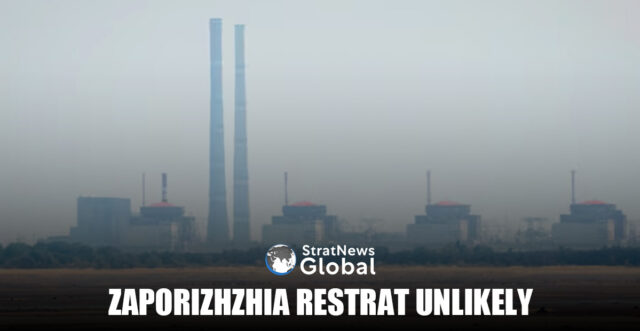Russia appears to have no plans to restart Ukraine’s Zaporizhzhia nuclear power plant, UN nuclear watchdog the International Atomic Energy Agency (IAEA) official said on Thursday, following Ukrainian concerns over reports suggesting Moscow intended to link the facility to its own power grid.
Zaporizhzhia, which is held by Russia, is Europe’s biggest nuclear power plant.
IAEA Calls For Ceasefire
Its six reactors are shut down as war rages around it. The IAEA has called for a ceasefire, after which measures to improve the water and external power supplies needed to cool nuclear fuel could be taken.
“Our teams continue to confirm there is no indication at the moment that there will be any active preparations for a restart of the plant now,” the IAEA official said on condition of anonymity.
A Ukrainian official said on Wednesday his country had protested to the IAEA about reports that Russia is building power lines to connect the Zaporizhzhia plant to its own grid.
Yuriy Vitrenko, Ukraine’s ambassador to the IAEA, told Ukrainian news agency Ukrinform that Kyiv sees any attempt by Russia to connect the occupied plant to its grid as a gross violation of international law and Ukrainian sovereignty.
On Tuesday, the New York Times cited a new Greenpeace report which found that Russia had been building more than 50 miles (80 km) of power lines between the occupied Ukrainian cities of Mariupol and Berdyansk.
IAEA Eyes Zaporizhzhia Restart
IAEA chief Rafael Grossi told Reuters in March it could be possible to restart one of the plant’s six reactors within months of a lasting ceasefire that is still proving elusive.
That would, however, require increasing the plant’s supplies of water and external power. Water has been a concern since the plant’s biggest source, the nearby Kakhovka reservoir, was emptied when its dam was blown up in 2023.
That led to wells being dug at Zaporizhzhia, which provide enough water to cool nuclear fuel in the reactors while they are shut down, but not enough to do so if they are restarted.
“The plant lost its main source of cooling water, so the whole system cannot work as it was originally designed,” the IAEA official said.
“The consumption of water is orders of magnitude higher (when the plant is operating) compared to cold shutdown. We don’t see any easy, quick fix for it,” they added.
(With inputs from Reuters)





